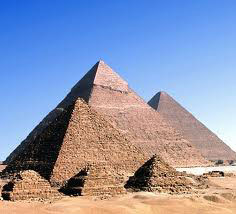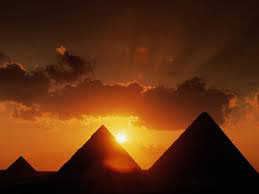Questions about Vastu Shastra
Q: What is Vastu Shastra?
- A: Vastu means building, Shastra means science. The science of Vastu links the body (the microcosm) with the universe ( the macrocosm). Vastu is India’s ancient Vedic tradition of design, architecture, and sacred space. It is both architecture and the art of how to honor and fill the space enclosed within a form. Many people are familiar with how yoga is a path to greater harmony, health, energy and joy in life. As the “yoga of design” Vastu offers a similar means of achieving these same benefits.By working in alignment with nature, Vastu enhances the spaces in which we live. Since people are becoming increasingly more aware of the benefits of yoga, meditation, Ayurveda (Vedic medicine) and Jyotish (Vedic astrology), it is therefore timely that Vastu, the ancient and valuable system of architecture and design, is now recognized and utilized for the enrichment it can give human life.
Q: What are the origins of Vastu Shastra?
- A. Vastu originated in India over 10,000 years ago and is the guiding principle behind many of the worlds most enduring structures. Vastu comes from the Atharva Veda in the ancient body of Indian wisdom called the Vedas, which can be considered similar to an encyclopedia of the universe. Atharva Veda, teaches us how to improve the quality of life, and contains Ayurveda, the science of health, Jyotish Shastra, the science of astrology, yoga and meditation.

Q: What are some historical examples of Vastu Shastra?
- A. Vastu Shastra has influenced the most famous architectural monuments throughout the world, including the Greek Parthenon, the Egyptian and Mayan Pyramids, the Taj Mahal and the Roman Coliseum. ( Show pictures.) The knowledge of Vastu, sacred design and architecture, spread throughout India to other parts of the planet thousands of years ago. Mayan pyramids in Mexico, and stonework in Peru follow Vastu techniques, guidelines and measurements in detail, and are in alignment with the cardinal directions. Vastu was known to Greek and Roman merchants who journeyed on trade routes to bring back spices, treasures and knowledge of Vastu from India to Europe.

Q: How is Vastu related to Feng Shui?
- A.Vastu is the parent source of Feng Shui. Aproximately 3,000 years ago the science of Vastu was carried over the mountains from India to China. There Vastu was adapted to the local cultural and climactic conditions and became known as Feng Shui. The goal is the same for both: to enable chi, or prana or life force energy to flow freely without becoming stuck. Vastu began thousands of years before feng shui and is part of feng shui’s origin. Both systems advocate natural light and fresh air in homes and offices. Both systems work to correct the negative effects of clutter and stagnant energy in an environment.
Q: Is Vastu Shastra associated with any religion?
- A: Vastu Shastra is a mystical science and comes from the Vedic tradition in India which includes yoga and meditation. Like these practices, the health enhancing, life-giving benefits of Vastu Shastra stand on their own.
Q: Why practice Vastu?
- A: If the five elements are balanced and all obstructions to life-supporting energy are removed you will receive the maximum life enhancing energy and support of nature, which will assist you in unfolding your full potential. You will have more opportunities and your thinking will be clear to act on them in the proper time.
Q: When should we use Vastu?
- A: It is best to practice Vastu when purchasing or renting an office, house, apartment or lot and when designing a home. You can also use Vastu for any existing structure or when you are facing problems at home or work.
Q: What are the main principles of Vastu?
- A. The main principles of Vastu are positive magnetic energy comes from the north and positive solar energy comes from the east. These two forces of nature affect every cell in our our being and form an electromagnetic grid around the surface of the earth. You can think of this grid as longitudinal and latitudinal lines. This grid system becomes a conduit for energies that emanate from the center of the earth, and receptor for solar, lunar and stellar energies. By aligning our bodies and our buildings to this earthly grid system, we gain the support of nature. It is like swimming with the current of a stream and not against it.In Vastu, a building is a living organism with its own energy field. It is affected by different qualities or rays of light, as the sun moves across the sky. In the north and east the sun produces ultraviolet rays, which are essential for our well-being. In the south, the sun produces infrared rays and in the west gamma rays, which are both harmful to our cellular structure. Vastu buildings are designed to be open to receive the life giving energies of the north and east and are more protected from the damaging rays that come from the south and west. .By balancing these elements in their proper proportions, we will gain the benefits of health, happiness, and prosperity.
Q: What are the five elements?
A. The five elements air, earth, water, fire, air and space. Everything in the Universe including our physical bodies is made up of the five elements. In any structure the five elements must be in balance to gain the support of nature. The interplay between these elements and the directions affects you on every level of existence. Each of the five elements, together with the directions, north, south, east and west, has a specific planetary influence as well, making a subtle but profound impact on your daily life.
Q: Why practice Vastu?
- A. If the five elements are balanced in a structure and all obstructions to life-supporting energy are removed, you receive the maximum life enhancing energy and support of nature. This will assist you in unfolding your full potential. You will have more opportunities for success and your thinking will be clear to act upon them at the proper timing.


